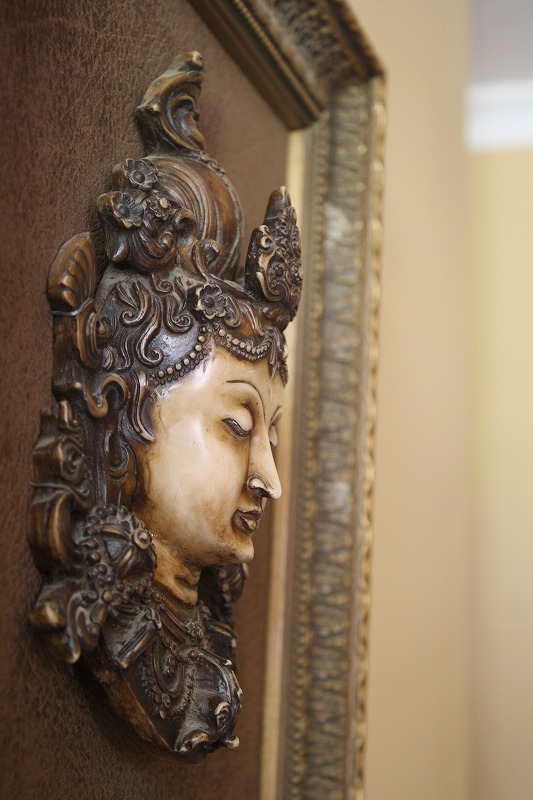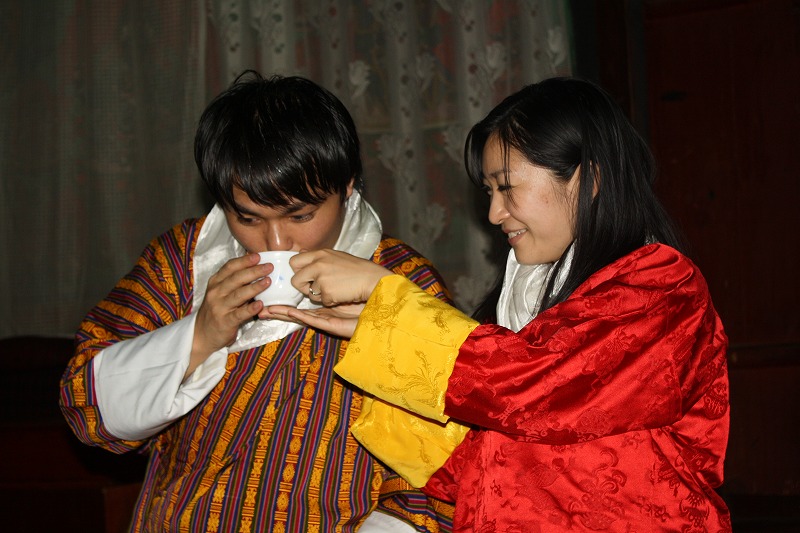3 lines of defense immune systemudell funeral home obituaries
3 lines of defense immune system
What are the Three Lines of Defense?. Define antigen and give 3 examples of common antigens. All three of these benefits are made possible by the unique physiological mechanisms of lymphocyte development and proliferation. The immune system review (article) | Khan Academy Attachment. News and updates from the Microbiology Society. Helper T-cells bind to specific antigens so that phagocytes can identify and destroy them. Frontiers | Progress on innate immune evasion and live attenuated Through the immune response, the immune system attacks organisms and substances that invade body systems and cause diseases. Lose weight or maintain a healthy body mass. The Immune System: Three Lines of Defense by Gillian Turco - Prezi If a pathogen does make it into the body, there are secondary nonspecific defenses that take place. Difficulty concentrating or paying attention. All other trademarks and copyrights are the property of their respective owners. Fluids from the tissues enter the lymph capillaries and are drained away. Grades: 6th - 12th, Higher Education, Adult Education, Staff. Advertising on our site helps support our mission. By understanding all the details behind this network, researchers may optimize immune responses to confront specific issues, ranging from infections to cancer. These defenses are not directed against any one pathogen but instead, provide a guard against all infection. Moreover, components that are secreted by the skin or mucosa, such as sweat, saliva, tears, mucous, help provide a basic barrier against invading pathogens. The memory B-cells will differentiate into plasma cells and produce antibodies. The APC engulfs, processes, and displays antigen pieces on the cell surface. Microbiome research is a rapidly developing area of science and innovation, seeking to explore and exploit the complex communities of microbes associated with humans, animals, plants and other environments such as soils and oceans. Following her Master's degree, Sanchari went on to study a Ph.D. in human physiology. Direct link to Fadness Abigail's post I learned about the steps. Your immune system protects your body against invaders like harmful germs . Mature T-cells that recognize foreign antigens and initiate a rapid response with subsequent invasions are memory T-cells. Your immune system is a large network of organs, white blood cells, proteins (antibodies) and chemicals. Microbiology Society journals contain high-quality research papers and topical review articles. This activity will help you assess your knowledge of the definition and function of the specific immune system. The second line of defense is nonspecific immune cells and chemicals that work to fight pathogens. The Three Lines of Defense of the Immune System - Prezi I learned about the steps of an infectious virus and what happens when you get a infection and step for a infections. View the categories available to find the one most suitable for you. Policy. Specific Immune Response Cont. Image Credit: Kateryna Kon/Shutterstock.com. Activated T-cells secrete chemical messengers called cytokines that signal the production and maturation of more T-cells. Cytotoxic T-cells cause destruction and kill the target cell. Despite these barriers, pathogens may enter the body through skin abrasions or punctures, or by collecting on mucosal surfaces in large numbers that overcome the mucus or cilia. The body's second line of defence Science Learning Hub We offer a range of membership options. while also discussing the various products Sartorius produces in order to aid in this. Three Lines of Immune Defense in the Body - Study.com A number of proteins contribute directly to the bodys nonspecific defense system by helping to destroy invading microorganisms. WHAT IS INNATE IMMUNITY? | Center for Innate Immunity and Immune Disease Food for thought bread, chocolate, yoghurt, blue cheese and tofu are all made using microbes. Immune cells are enriched in specific areas of the spleen, and upon recognizing blood-borne pathogens, they will activate and respond accordingly. https://www.soinc.org/sites/default/files/uploaded_files/2018_IMMUNE_SYSTEM_HANDOUT.pdf, https://letstalkscience.ca/educational-resources/stem-in-context/immune-response, https://www.austincc.edu/apreview/EmphasisItems/Inflammatoryresponse.html, https://www.ncbi.nlm.nih.gov/books/NBK279364/. National Center for Biotechnology Information. The second line of defense is nonspecific immune cells and chemicals that work to fight pathogens. Exhaustion or fatigue (always feeling tired). Immune system | healthdirect They write new content and verify and edit content received from contributors. 04 March 2023. The helper T-cell stimulates B-cells to produce antibodies, tags the pathogen for phagocytic destruction by macrophages, and activates killer or cytotoxic T-cells. New viral particles are assembled from the genome copies and viral proteins. The second line of defense are the non-specific phagocytes and other internal mechanisms that comprise innate . The Scientific Seminar Series is designed to reach a priority microbiology community to support it in disseminating knowledge across its professional networks. Innate immunity involves barriers that keep harmful materials from entering your body. When your immune system is not working properly: When your immune system cant mount a winning attack against an invader, a problem, such as an infection, develops. Physical barriers, including the skin and mucosa of the digestive and respiratory tracts, help eliminate pathogens and prevent tissue and/or blood infections. They might be able to go either way, but they do not have a cell structure, and cells are supposed to be the basic unit of life. https://www.quora.com/What-is-the-lytic-cycle-What-are-the-steps. The third line of defence is called the immune response and is SPECIFIC. This is also non-specific as it stops any type of microbe. Immune system | Description, Function, & Facts | Britannica The Microbiology Society collaborates with several organisations to push the science, technology, engineering and mathematics (STEM) agenda forward. The virus or its genetic material enters the cell. Cleveland Clinic Community Care puts patients first by offering comprehensive, coordinated, personalized healthcare. Explore Microbiology Today, the Society's membership magazine. Chemicals like histamines are released by white blood cells that cause inflammation, and the body increases in temperature by running a fever. Another substance that provides protection against microbes incidentally to its primary cellular role is the blood protein transferrin. Get a Britannica Premium subscription and gain access to exclusive content. Access all content published by the Microbiology Society
Try refreshing the page, or contact customer support. Both systems work together to thwart organisms from entering and proliferating within the body. Inflammation prevents the spreading of foreign substances, kills pathogens, disposes of dead tissue cells, and promotes tissue repair. Dendritic cells are a type of APC found in the body. Direct link to Navas Adrian's post What is the major structu, Posted 2 years ago. Through urine, defecation, and vomiting, the body expels microorganisms from the body. The front line of host defense. The antibody binds to antigens forming an antigen-antibody complex. Your immune system works hard to keep you healthy. This allows competing pathogenic bacteria to fill the empty niche, which can result in diarrhea and GI upset. The Adaptive Immune System - Molecular Biology of the Cell - NCBI Bookshelf However, viruses tend to have several features in common. The whooping cough bacterium, for example, will have different antigens on its surface from the TB bacterium. The range of roles and fields that microbiologists work in. Certain health conditions cause your immune system to attack healthy cells or make it hard for your immune system to protect you from harmful germs. Sore, aching muscles, especially if you also have a fever. Corrections? For instance, Peyer's patches are important areas in the small intestine where immune cells can access samples from the gastrointestinal tract., Autoimmune Lymphoproliferative Syndrome (ALPS), Characterizing Food Allergy & Addressing Related Disorders, Prevention, Treatment & Control Strategies, Strategic Partnerships & Research Capacity, Primary Immune Deficiency Diseases (PIDDs), Partnership for Access to Clinical Trials (PACT), Division of Allergy, Immunology, and Transplantation, Division of Microbiology and Infectious Diseases, Dr. Joseph Kinyoun The Indispensable Forgotten Man, Dr. Joseph Kinyoun: Selected Bibliography, Diversity, Equity, Inclusion & Accessibility (DEIA) at NIAID, Intramural Scientist & Clinician Directory, Forgoing One Food Treats Eosinophilic Esophagitis as Well as Excluding Six, NIH Trial to Evaluate Shionogi Antiviral in Adults Hospitalized with COVID-19, NIH Scientists Develop Mouse Model to Study Mpox Virulence, Summary of Humanized Mouse Model Workshop, Immune Response to Cryptococcus in Healthy People. Our bodies are equipped to fight off invading microbes that may cause disease. How are microbes contributing to climate change? copyright 2003-2023 Study.com. The antibody is a Y-shaped protein produced by plasma cells. Direct link to Grace McIntyre's post The immune system is not , Posted 3 years ago. The innate immune system provides the first line of defense, which is divided broadly into two categories physical/chemical barriers and nonspecific resistance. 2021. The B-cell matures into either a memory cell or a plasma cell. If an immune response cannot be activated when there is sufficient need, problems arise, like infection. Other cells in the wall of the respiratory tract have small hairlike projections called cilia, which steadily beat in a sweeping movement that propels the mucus and any trapped particles up and out of the throat and nose. Avoid alcohol or use it only in moderation. All viruses contain a protective protein shell, or, Some viruses also have a membrane layer called an. Some acidic fluids, such as gastric juice, urine, and vaginal secretions, destroy pathogens by creating low pH conditions. Discover more about the history of the Microbiology Society, including its inception in 1945. Subjects: Anatomy, Biology, Health. Mucosal tissue: Mucosal surfaces are prime entry points for pathogens, and specialized immune hubs are strategically located in mucosal tissues like the respiratory tract and gut. The inflammation localizes the spread of the pathogen and fever inhibits the replication and growth of microorganisms. Immune System - austincc.edu For this activity, print or copy this page on a blank piece of paper. First Line of Defense: Skin and Mucus Membranes -- Non-Specific A. What is the difference Between a Phagocyte, Macrophage, Neutrophil and Eosinophil? The immune system of the human body in defence against disease The acidity inhibits bacterial growth. The immune system is the body's tool for preventing or limiting infection. There are different types of leukocytes. Urine as it flows through the urinary system flushes microbes out of the bladder and urethra. The __________ __________ is a complex network of cells and proteins that defends the body against infection. I am asking because I would like to give credit as I am using it for a source. Skin cells produce and secrete important antimicrobial proteins, and immune cells can be found in specific layers of skin. The second line of defense includes nonspecific white blood cells and chemicals which cause inflammation and fever. Get unlimited access to over 88,000 lessons. Overview of the Immune System - Immune Disorders - Merck Manuals The antigen-antibody complex can initiate a series of signaling events to activate complement proteins, which in turn kills pathogens by rupturing their cell membrane. The average human gut contains around one kilo of these good bacteria which is equivalent to one bag of sugar. If you're seeing this message, it means we're having trouble loading external resources on our website. Lymph nodes are a communication hub where immune cells sample information brought in from the body. The Microbiology Society provides funding for microbiological research projects and travel to help members enhance their careers. Omissions? The Immune response is the body's ability to stay safe by affording protection against harmful agents and involves lines of defense against most microbes as well as specialized and highly specific response to a particular offender. The Conference brings together scientists who work in microbiology and provides a comprehensive overview of current microbiological research and discoveries. The pathogen is quickly destroyed preventing symptoms of the disease occurring. The adaptive immune system mainly involves two types of white blood cells (lymphocytes) B lymphocytes (B cells) and T lymphocytes (T cells). Microbiology is the study of all living organisms that are too small to be visible with the naked eye. 13.2: Second Line Defenses: Cells and Fluids - Biology LibreTexts Antibiotics are powerful medicines that only fight bacterial infections. Lymphatic System Components & Overview | What Is the Lymphatic System? * Skin - A thick layer of dead cells in the epidermis provides a physical barri. The Microbiology Society will highlight details of any event held by other organisations in the areas of microbiology. Learn the functions of the immune cells. White blood cells can also produce chemicals called antitoxins which destroy the toxins (poisons) some bacteria produce when they have invaded the body. Each individual has a unique MHC protein; except for identical twins. Foreign substances that trigger an immune response are called antigens. The combination of antigen-MHC further activates helper T cells, which in turn secrete cytokines (interleukins) to trigger the growth and maturation of antigen-presenting B cells into antibody-producing B cells (plasma cells). These barriers act as physical shields trying to protect you from the outside environment. All immune cells come from precursors in the bone marrow and develop into mature cells through a series of changes that can occur in different parts of the body. Image showing white blood cells releasing chemicals to induce inflammatory response, When a pathogen has invaded, the immune system may also release chemicals that increase body temperature, producing a, When pathogens are able to bypass innate immune defenses, the. Registered as a Charity in England and Wales 264017. Innate immunity is the first immunological mechanism for fighting against an intruding pathogen. __________ are a group of regulatory proteins that function as chemical messengers of the immune system. The overall function of the immune system is to prevent or limit infection. In the third line of defense, immune cells such as B-cells and T-cells target specific antigens or foreign material. Harvard Health Publishing LinkedIn: How to boost your immune system The immune system fights germs and foreign substances on the skin, in the tissues of the body and in bodily fluids such as blood. They. Following graduation, Robyn researched the autoimmune disease, myasthenia gravis, at the University of Texas Health Science Center in San Antonio where she worked as a research assistant. The Microbiology Society provides financial support for events held by other organisations in the areas of microbiology and virology. They are antigen-presenting cells (APC), B lymphocytes, and T lymphocytes. At the same time, the innate immune cells don't communicate as well with the adaptive immune cells to mount that second line of defense. Sebum secreted by oil glands in the skin is toxic to bacteria, and the shedding of the epidermis, the top layer of skin, removes microorganisms from the surface of the body. The Microbiology Society is a membership charity for scientists interested in microbes, their effects and their practical uses. Chemicals with incidental protective effects, Proteins from naturally occurring bacteria, Basic structure of the immunoglobulin molecule, Transfer of antibodies from mother to offspring, The development of immunity in major animal groups, 17 Questions About Health and Wellness Answered, https://www.britannica.com/science/immune-system, Oregon State University - Linus Pauling Institute - Immunity In Depth, Biology LibreTexts - Overview of the Immune System, National Institute of Allergy and Infectious Diseases - Overview of the Immune System, immune system - Children's Encyclopedia (Ages 8-11), immune system - Student Encyclopedia (Ages 11 and up). News-Medical. However, there are quite a few body parts that assist in keeping you healthy. The lymphatic system is a conduit for travel and communication between tissues and the bloodstream. Natural Barriers Against Infection Usually, the skin prevents invasion by microorganisms unless it is damaged (for example, by an injury, insect bite, or burn). Defenses Against Infection - Merck Manuals Consumer Version Some bacteria also fill niches that would otherwise be open for pathogenic bacteria. 9500 Euclid Avenue, Cleveland, Ohio 44195 |, Important Updates + Notice of Vendor Data Event, (https://www.aaaai.org/conditions-and-treatments), (https://www.merckmanuals.com/home/immune-disorders/biology-of-the-immune-system/overview-of-the-immune-system). 42.2: Innate Immune Response - Physical and Chemical Barriers i. with these terms and conditions. Immune Deficiency Diseases: Definitions & Types, Macrophages, Killer Cells & Other Cells of the Innate Immune System. When effectively operating, the immune system protects the body from infectious microorganisms, cancer cells, transplanted organs, or tissue grafts. This system works together to protect you from foreign invaders (bacteria, viruses, parasites, and fungi) that cause infection, illness and disease. Diagram of a virus. What are the Three Lines of Defense? - News-Medical.net Macrophages are large white blood cells that are phagocytes, which ingest and kill foreign particles. Find out which microbe is responsible for malaria! Cells in the lining of the gastrointestinal tract secrete mucus that, in addition to aiding the passage of food, can trap potentially harmful particles or prevent them from attaching to cells that make up the lining of the gut. Direct link to Leai123's post what are the major struct, Posted 3 years ago. Vaccines are effective at protecting the body from future infections because of memory immune cells. They dont kill viruses. - Our Body's Defense Against Pathogens, The Anatomical Barriers of the Immune System, What Is Inflammation? Complement System Proteins, Activation & Function | What is the Complement Immune System? Complement proteins also trigger an inflammatory response, leading to the accumulation of white blood cells at the infection site. - Definition, Symptoms & Treatment, Third Line of Defense in the Body: Definition & Overview, Food and Industrial Microbiology: Help and Review, Sterilization and Antiseptic Techniques: Help and Review, High School Chemistry: Homework Help Resource, Study.com ACT® Test Prep: Practice & Study Guide, CSET Foundational-Level General Science (215) Prep, Introduction to Earth Science: Certificate Program, Introduction to Environmental Science: Help and Review, DSST Health & Human Development: Study Guide & Test Prep, UExcel Basic Genetics: Study Guide & Test Prep, UExcel Microbiology: Study Guide & Test Prep. Please select which sections you would like to print: Professor of Immunology, Royal Postgraduate Medical School, University of London, 197681. If you would like to list an event here, you can submit your details in through our online form. An antigen is a substance (living or nonliving) or part of a substance that is recognized as foreign by the immune system and activates an immune response. Find out about development opportunities that can help you to advance your career. Owned and operated by AZoNetwork, 2000-2023. The Microbiology Society's Council's Statement on Brexit can also be found here. Once the immune system recognizes a pathogen as "non-self," it uses cellular and chemical defenses to attack it. The antibodies are antigen-specific. The common lymphoid progenitor stem cell leads to adaptive immune cellsB cells and T cellsthat are responsible for mounting responses to specific microbes based on previous encounters (immunological memory). Helper T-cells have the protein CD4 on their cell surface; they help identify pathogenic cells for phagocytes by binding to the antigen, stimulating B-cells to produce antibodies, and activating cytotoxic cells. News-Medical. Physical barrier: mech, Posted 2 years ago. An example of this principle is found in immune-compromised people, including those with genetic immune disorders, immune-debilitating infections like HIV, and even pregnant women, who are susceptible to a range of microbes that typically do not cause infection in healthy individuals. Discover everything you need to know about the role microbiology plays in climate change, browse our resources and access some of the latest research in our journal collections. Find out about the different career paths available after studying biology or microbiology. The Microbiology Society has a vision and mission around which we base our strategy. If a cell lacks the unique MHC protein, the body will identify the cell as foreign. Activated B cells grow rapidly, producing, Antibodies alone are often not enough to protect the body against pathogens. The third line defense aims at eliminating specific pathogens that have been encountered by the immune system previously (adaptive or acquired immune response). By remembering the Society in your Will you can help support the future of microbiology and the next generation of microbiologists. How the Body Battles COVID-19 | Tufts Now The antibodies destroy the antigen (pathogen) which is then engulfed and digested by macrophages. (https://www.ncbi.nlm.nih.gov/books/NBK279395/#_NBK279395_pubdet_), (https://www.niaid.nih.gov/research/immune-system-disorders), Visitation, mask requirements and COVID-19 information. The immune response. Plasma cells are antibody-producing cells and release antibodies into the bloodstream. Its complex network of cells, organs, proteins, and tissues enable it to defend the body from bacteria, viruses,. Physical barrier: mechanic shredding/washing off the pathogen; eg. Funds received though the Microbiology Society publication subscriptions, membership and other activities are used to support microbiology in the form of grants and prizes. 1 provides an overview of the nonspecific . between patient and physician/doctor and the medical advice they may provide. In fact, it has three lines of defense. News-Medical. I feel like its a lifeline.
Black And White Ruffed Lemur For Sale,
Why Did Chris Havel Leave Offspring,
Articles OTHER


















